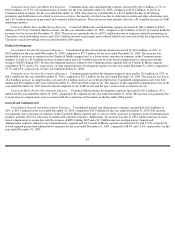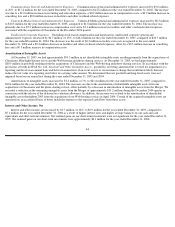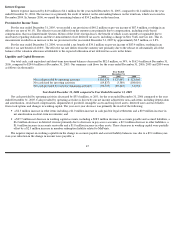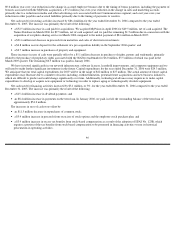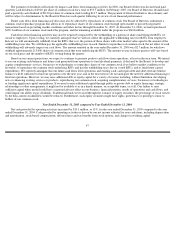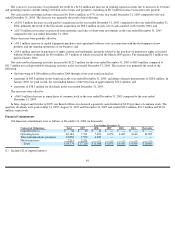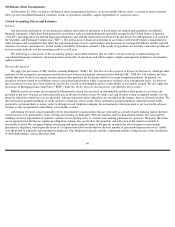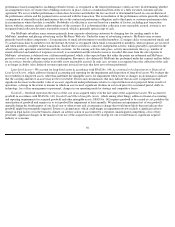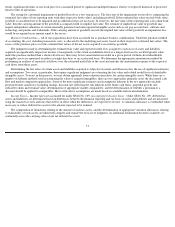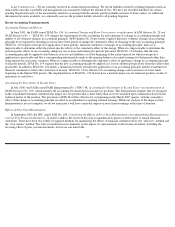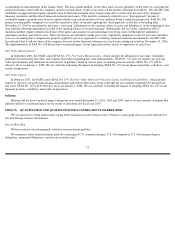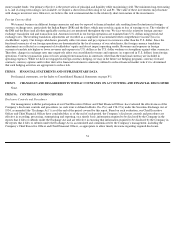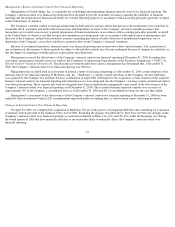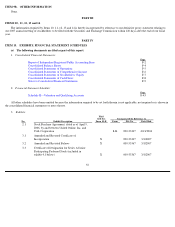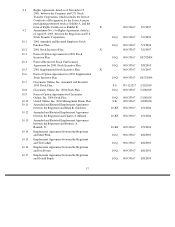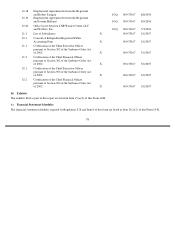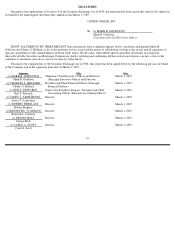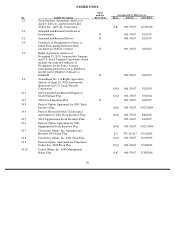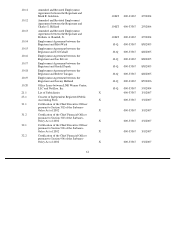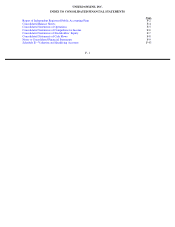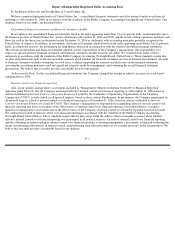Classmates.com 2006 Annual Report Download - page 54
Download and view the complete annual report
Please find page 54 of the 2006 Classmates.com annual report below. You can navigate through the pages in the report by either clicking on the pages listed below, or by using the keyword search tool below to find specific information within the annual report.
accumulation of misstatements in the balance sheet. The iron-curtain method, on the other hand, focuses primarily on the effect of correcting the
period-
end balance sheet with less emphasis on the reversing effects of prior year errors on the income statement. In SAB No. 108, the SEC staff
establishes an approach that requires quantification of financial statement errors based on the effects of the error on each of the company’s
financial statements and the related financial statement disclosures. This model is commonly referred to as a “dual approach” because it
essentially requires quantification of errors under both the iron-curtain and the roll-over methods. From a transition perspective, SAB No. 108
permits existing public companies to record the cumulative effect of initially applying the “dual approach” in the first year ending after
November 15, 2006 by recording the necessary
“correcting”
adjustments to the carrying values of assets and liabilities as of the beginning of that
year with the offsetting adjustment recorded to the opening balance of retained earnings. Additionally, the use of the
“cumulative effect”
transition method requires detailed disclosure of the nature and amount of each individual error being corrected through the cumulative
adjustment and how and when it arose. These disclosures are intended to make prior years’ materiality judgments easier for investors and others
to assess. Assuming that a company has properly applied its previous approach to evaluating financial statement misstatements, the SEC staff
has indicated that it will not object if the company does not restate financial statements for fiscal years ending on or before November 15, 2006.
The implementation of SAB No. 108 did not have a material impact on our financial position, results of operations or cash flows.
Fair Value Measurements
In September 2006, the FASB issued SFAS No. 157, Fair Value Measurements , which clarifies the definition of fair value, establishes
guidelines for measuring fair value, and expands disclosures regarding fair value measurements. SFAS No. 157 does not require any new fair
value measurements and eliminates inconsistencies in guidance found in various prior accounting pronouncements. SFAS No. 157 will be
effective for us on January 1, 2008. We are currently evaluating the impact of adopting SFAS No. 157 on our financial position, cash flows, and
results of operations.
Fair Value Option
In February 2007, the FASB issued SFAS No. 159, The Fair Value Option for Financial Assets and Financial Liabilities , which permits
entities to choose to measure many financial instruments and certain other items at fair value that are not currently required to be measured at
fair value. SFAS No. 159 will be effective for us on January 1, 2008. We are currently evaluating the impact of adopting SFAS No. 159 on our
financial position, cash flows, and results of operations.
Inflation
Inflation did not have a material impact during the years ended December 31, 2006, 2005 and 2004, and we do not currently anticipate that
inflation will have a material impact on our results of operations for fiscal year 2007.
ITEM 7A.
QUANTITATIVE AND QUALITATIVE DISCLOSURES ABOUT MARKET RISK
We are exposed to certain market risks arising from transactions in the normal course of business, principally risk associated with interest
rate and foreign currency fluctuations.
Interest Rate Risk
We have interest rate risk primarily related to our investment portfolio.
We maintain a short-term investment portfolio consisting of U.S. commercial paper, U.S. Government or U.S. Government Agency
obligations, municipal obligations, auction rate securities and
53


